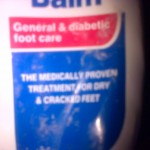Hyperbaric oxygen therapy (HBOT) (also called hyperbaric medicine) is the use of oxygen at higher than normally found in our atmosphere to treat medical problems.
Developed as a way of treating decompression sickness (otherwise known as “the bends”) in divers. More recently it is also used to treat gas gangrene and carbon monoxide poisoning.
The basic principle is that the patient is placed in a chamber which provides an atmosphere high in oxygen. Though in at least one Asian airport you can get an oxygen feed (in a bar as I recall) which claims that it can assist in overcoming your jet lagged. I’ve tried it and I can’t say it worked.
Hyperbaric oxygen therapy has become fashionable in recent years as a treatment for a number of other conditions but the effectiveness is much disputed. These include multiple sclerosis, diabetic wounds, intracranial abscesses; necrotizing fasciitis; refractory osteomyelitis; radiation injuries and skin grafts. It has even been tried on children with autism.
As HBOT is seen as very controversial I felt it would be useful to find out more about our readers views and experiences. It would be great if you could share the answers to the following questions in the comments box below:-
a) Have you ever had Hyperbaric Oxygen Therapy?
b) What was your reason for choosing HBOT? What condition were you hoping to treat?
c) How successful was the HBOT?
d) What was the process like? Where did you receive the treatment?
e) Would you recommend Hyperbaric Oxygen Therapy to others and why?
Thanks very much in advance for sharing!


